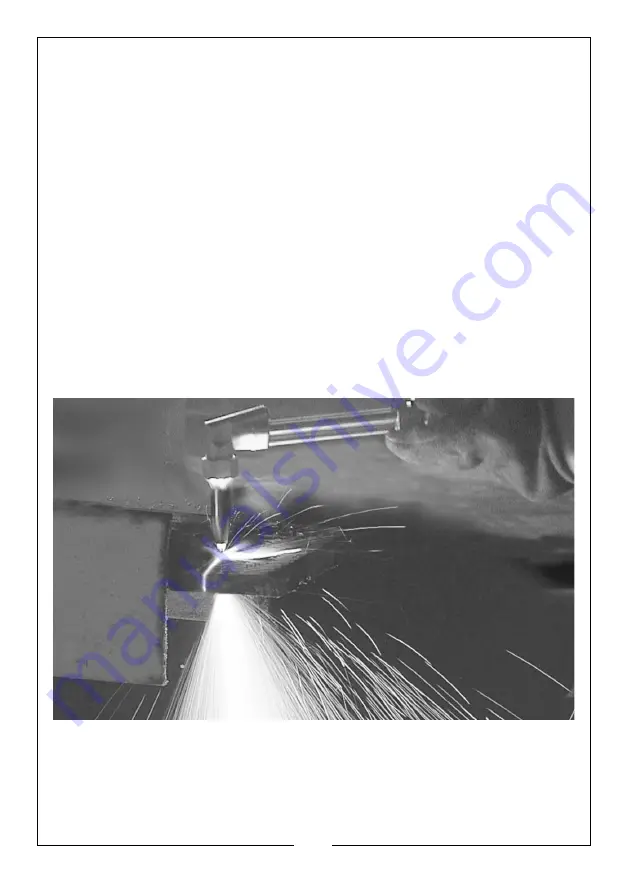
12
Parts & Service: 020 8988 7400 / E-mail: [email protected] or [email protected]
the fit between the two metals to be joined is not close. The metals must be
cleaned thoroughly before attempting to braze, gently play the flame onto
both parts until they become a dull reddish colour. Both pieces must be of
equal temperature otherwise the braze will flow to the hottest piece. Heat the
rod by placing it in the flame, then dip it into the flux (note the heat causes the
flux to melt and stick to the rod). If a prefluxed rod is used, this heating and
dipping step may be eliminated. Once the rod is fluxed, and the metals are
heated to the correct temperature, touch the rod to the joint, the rod melts
and flows over the heated area, depending on the size of the joint, it may be
necessary to dip the rod into the flux again. Abundant flux must be used,
otherwise the molten rod will not stick to the metals being joined.
Silver brazing is a little faster than bronze brazing. This is because silver melts at
a much lower temperature and less heat is required. However, the joint must fit
tightly together. Bronze bridges a gap much better than silver. Instead of
putting flux on the silver rod, the joint should be painted with flux. The way to
determine when the metals are at the correct temperature is to watch the flux
as it starts to bubble; as it does so it is time to apply the silver. The silver melts as
it touches the hot metal and the molten silver flows over the fluxed area.
FLAME CUTTING
Flame cutting is a simple process that can be quickly mastered. Only steel can
be cut with the oxyacetylene method, since cast iron, stainless steel,
aluminium, brass and other ferrous metals do not burn the way that steel does.
The way to cut steel is to heat it to its kindling temperature (a reddish colour),
then burn it with pure oxygen. A cutting torch provides both the preheat


































